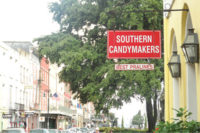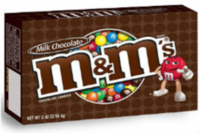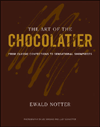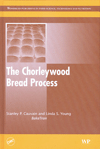The Way Candy Was
Nostalgic confections have a special way of tapping into the joy of days gone by.
Back in the day, the
old-fashioned candy store featuring penny candy was the place where kids
first turned into consumers. Over the years, this type of retailer became
an American icon—and extinct. But it was replaced by convenience
stores and other mass market retailers that offered young consumers their
first opportunity to pick out and buy a small sweet treat for themselves.
And so that candy—the candy from whatever era you were a kid
in—the ‘50s, the ‘60s, the ‘70s, the ‘80s,
and soon to come—the ‘90s—that is the candy that becomes
nostalgic to you—and a very viable sub-segment of the confectionery
business for retailers.
The names for nostalgic candy include—Old Time
Candy, Penny Store Candy, Retro Candy, Barrel Candy, Soda Shop Candy,
Heritage Candy, and even Groovy Candy. Of course it makes no difference
what you call it; it’s all the same—a booming niche in the U.S.
candy business. This old-but-new category has become very popular in recent
years partly because the largest candy makers have concentrated on fewer
items, mostly chocolate. Nostalgic candy actually has a very strong
non-chocolate base.
Imperatives
A retailer that makes nostalgic candy a department
focus will have a unique edge over other brick-and-mortar competition;
currently, the Internet is still filling most of the void in the market for
candy that consumers remember from when they were kids.
The biggest mistake a retailer could make is to take
on a few retro pieces in its bulk candy section, for example, and not
promote it as the very special offering that it is. If a retailer is going
to go for it, it’s got to cover all the bases. Candies from all eras
should be included, and signage and promotion must prevail.
Consumers
Many baby boomers have started online nostalgic candy
businesses, but they are certainly not the only consumers of it. Baby
boomers seem to have a special appreciation for the category—perhaps
because they were a generation of self-indulgence—and continue to be
so. But let’s face it; all generations view the candy they had as a
kid as having some special magic. What’s more, many parents are making history lessons out of nostalgic candy. Expect that
after baby boomers and subsequent generations introduce their kids to
their retro candies, those candies will become retro again—in another
20 or 30 years.
Adjacencies
Nostalgic candy lends itself to creative cross
promotion. Anything retro that the retailer sells—old movies just
released on DVD, household appliances that are styled around retro looks,
retro apparel, any gift or home item with old-fashioned scenes such as that
of Thomas Kinkade—these are all perfect product adjacencies for
nostalgic candy, especially if the retailer markets it as the perfect gift
item for a milestone birthday.
Seasonality
Don’t discount the great opportunity in seasonal
retro candy. The top Halloween nostalgic item from a retailer who knows how
to play up the category: wax fangs. “They’re very cool;
there’s nothing like them,” he maintains.
Outlook
The great thing about nostalgia is it will never
become a passing fad. There will always be some great retro candy favorite
from childhood that will appeal to almost any consumer out there. What will
be new on the horizon is how retailers market it and promote it. And
they’ll be backed up by more candy manufacturers who say they are
receiving high demands to bring back old consumer favorites. Retailers must
stay on top of what is being re-introduced in this constantly growing
category. New twists to old traditions are popping up as well. Retro
candy manufacturers have brilliantly become aware that there are regional
and generational opportunities with some of their old-fashioned
candies—sometimes as simple as changing or adding colors, or in the
case of certain conversation candies—adding more modern sayings.
A famous philosopher once said, “A genius is
someone who can bring back the joys of childhood at will.” Perhaps
then this nostalgic candy category has the potential to turn its best
retailers into geniuses.
Merchandising Musts
Stress fresh.
There’s nothing worse than a retro candy that tastes retro. Retailers want to convey the idea of retro, not the idea of old and stale. Make sure sources are of the highest quality and pass the fresh test. Then promotionally stress the heck out of the quality. Allow customers to sample it and taste for themselves.
There’s nothing worse than a retro candy that tastes retro. Retailers want to convey the idea of retro, not the idea of old and stale. Make sure sources are of the highest quality and pass the fresh test. Then promotionally stress the heck out of the quality. Allow customers to sample it and taste for themselves.
Categorize by era.
Retailers should familiarize themselves with nostalgic candy of each era. Divide and conquer those candies by its generation or decade. Signage should reflect a particular group—for example using psychedelic artwork for candies from the ‘60s or ‘70s. If a retailer really wants to follow a specialty trend, it could package certain era candies in boxes or baskets that also feature the appropriate decade’s artwork.
Retailers should familiarize themselves with nostalgic candy of each era. Divide and conquer those candies by its generation or decade. Signage should reflect a particular group—for example using psychedelic artwork for candies from the ‘60s or ‘70s. If a retailer really wants to follow a specialty trend, it could package certain era candies in boxes or baskets that also feature the appropriate decade’s artwork.
Unify a look.
Nostalgic candy has an inherent theme—and it begs for that theme to be unified. Labels should preferably match the nostalgia theme in appearance such as type-face. The department should hold together visually, while retailers mustn’t forget the obvious, such as clear price signs. Grabbing the shopper’s interest and holding it through a theme is very powerful, especially when that theme could bring back happy emotions and memories that have the potential to commit that shopper to that retailer.
Nostalgic candy has an inherent theme—and it begs for that theme to be unified. Labels should preferably match the nostalgia theme in appearance such as type-face. The department should hold together visually, while retailers mustn’t forget the obvious, such as clear price signs. Grabbing the shopper’s interest and holding it through a theme is very powerful, especially when that theme could bring back happy emotions and memories that have the potential to commit that shopper to that retailer.








